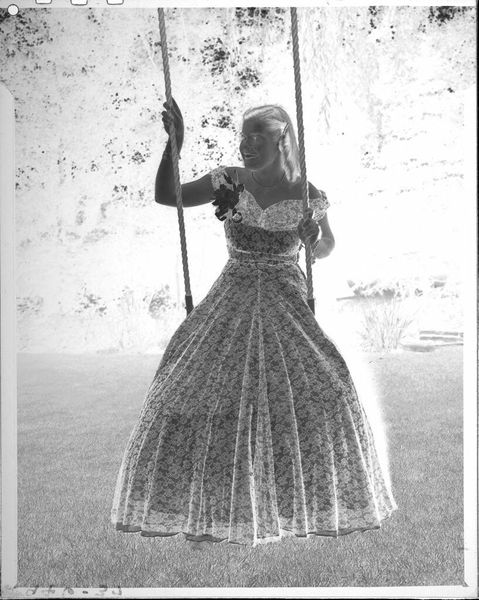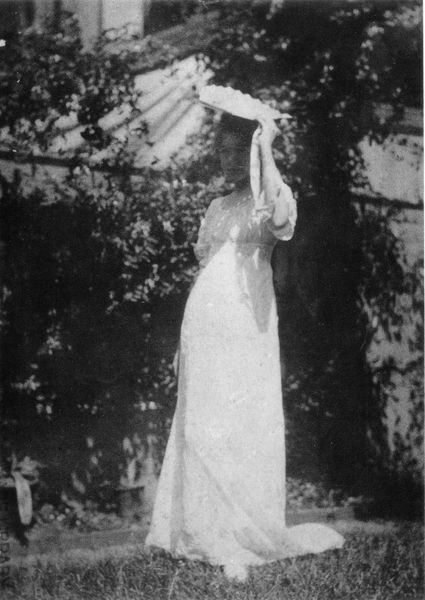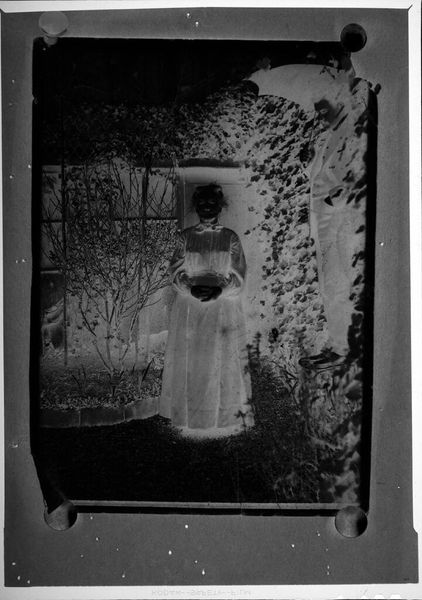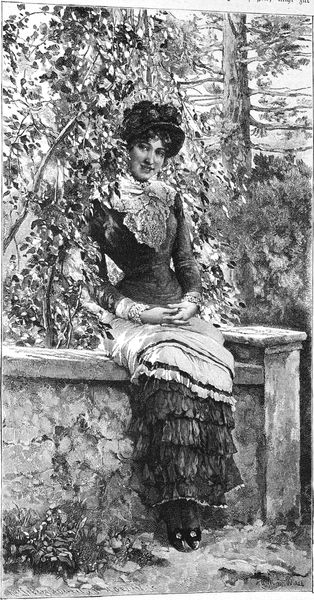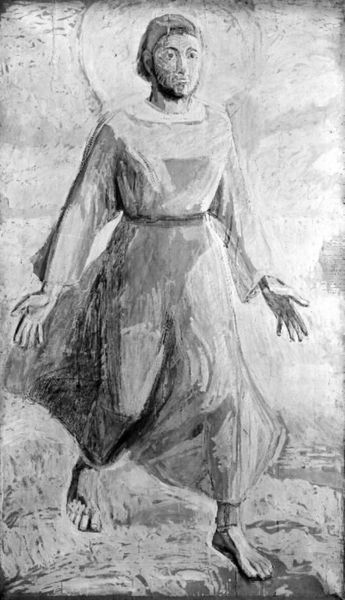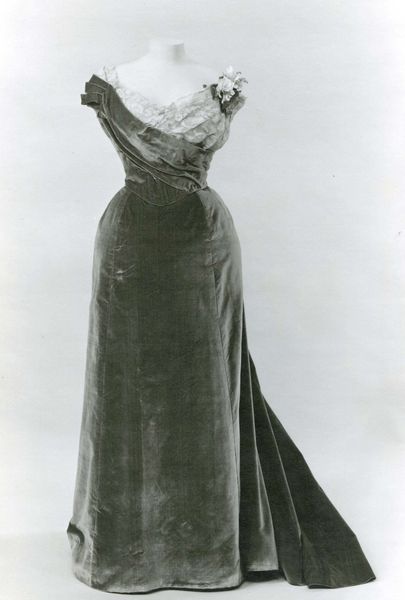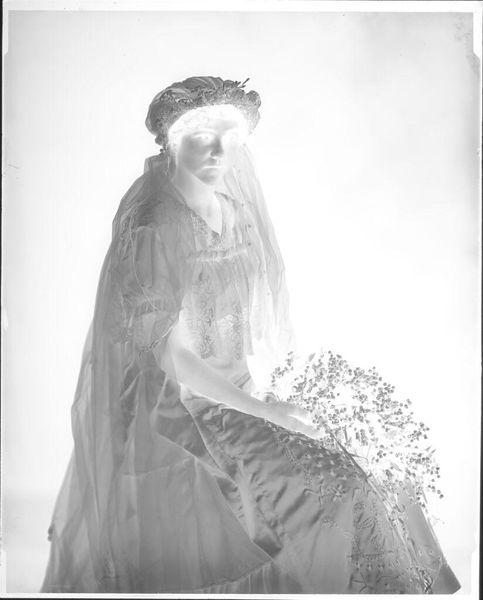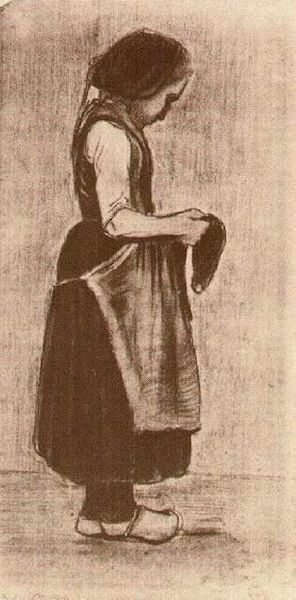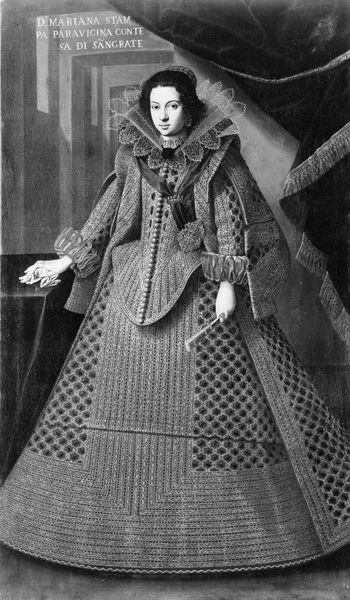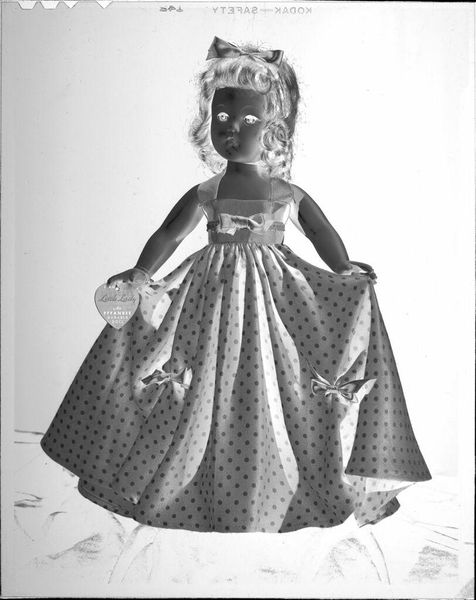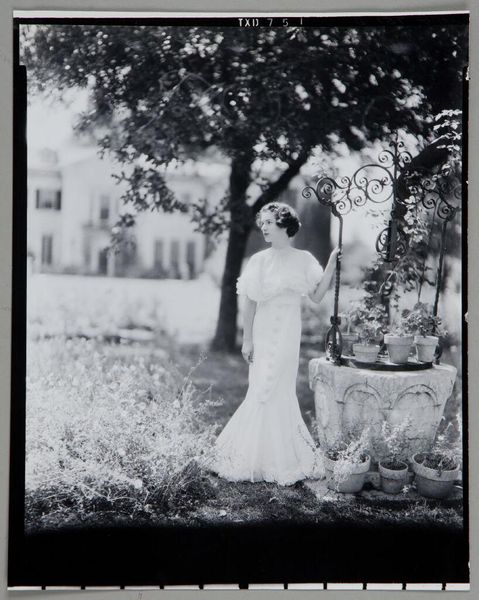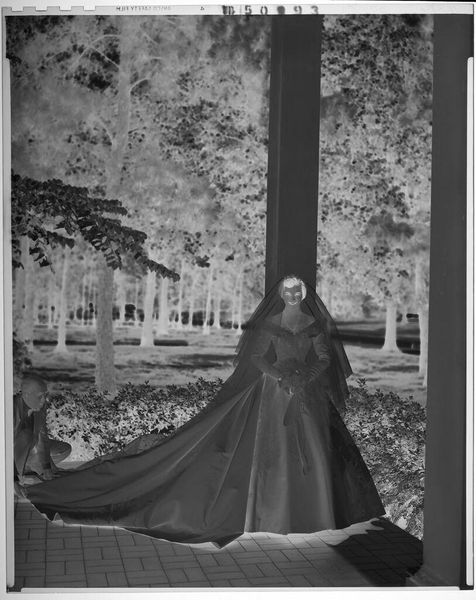
Dimensions: 44 3/8 x 35 3/4 in. (112.7 x 90.8 cm)
Copyright: Public Domain
Editor: This is "Vespers," painted by George Hitchcock sometime between 1892 and 1900, now residing at the Met. The monochrome palette creates this lovely sense of calm, but I’m intrigued by the figure's elaborate cloak and the implied labor in creating it. What draws your eye to this piece? Curator: My focus is immediately drawn to the materiality. We see a rendering, an artistic fabrication of what undoubtedly were cotton or linen textiles. Consider the intense, specialized labor of weaving such a detailed floral pattern for the cape, or the delicate lace edging on her veil. Do you think Hitchcock’s choice of rendering the scene monochromatically impacts your understanding of this labor? Editor: Absolutely. The lack of color emphasizes texture and pattern; it’s less about visual realism and more about the tangible presence of the materials and the unseen hands that shaped them. It's also true for the land that can be viewed from a distance behind the personage in this landscape Curator: Precisely! And consider the social context. This woman’s attire suggests a certain social class, and possibly religious observance suggested in the name of the artwork - but the artist reduces those indicators to variations in a monochromatic image. It compels us to consider not just who she *appears* to be, but also the production networks supporting her lifestyle, from the fields where the flax grew to the workshop where the lace was made. How does focusing on the work in those materials shift your interpretation? Editor: I see it now as less about an individual and more about a system, about the social and economic forces made material through cloth, labor, and artistic representation. The absence of color forces us to confront those systems directly, stripped bare of aesthetic distractions. Curator: Indeed. Hitchcock prompts us to see the art as a product reflecting the interconnectedness of material culture and social stratification, a silent monument to labor and its representation. Editor: I hadn’t considered the layers of labor and production involved beyond just the painting itself. Fascinating.
Comments
No comments
Be the first to comment and join the conversation on the ultimate creative platform.
